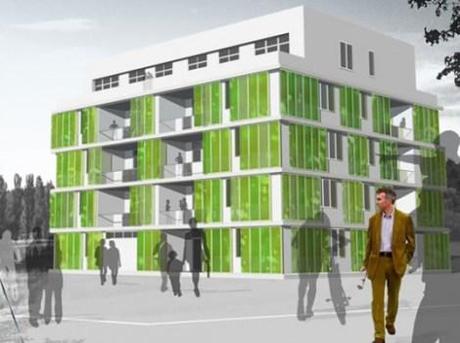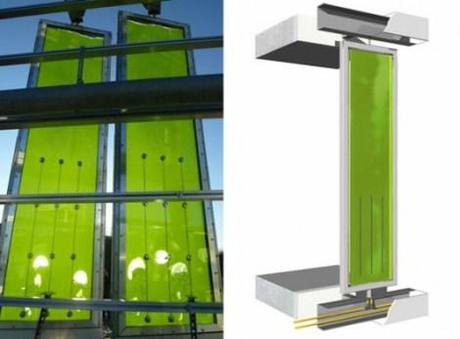I’ve heard all about solar powered buildings or wind energy but an algae-powered building is relatively new. The BIQ house in Germany, designed in cooperation between SPLITTERWERK, Arup and Bollinger und Grohmann for Otto Wulff und SSC, features a ‘bio-adaptive façade’ that uses microalgae to generate renewable energy and provide shade.
Algae in the bio-reactor façades grow faster in bright sunlight to provide more shade and to create the algae façade, the building is covered in bio-reactive louvers that enclose the algae. These louvers allow the algae to survive and grow faster than they would otherwise, while providing shade for the interior of the building. The bio-reactors trap the heat energy created by the algae, which can then be harvested and used to power the building.

According to Simon O’Hea, director at Colt,
“It’s been a very rewarding scheme to be involved in. We have put a lot of work into meeting the technical challenges and we now have a commercial-scale, effective solution that uses live algae as a smart material to deliver renewable energy. You can’t get greener than that.”
Arup’s Europe Research Leader, Jan Wurm, said:
To use bio-chemical processes for adaptive shading is a really innovative and sustainable solution so it is great to see it being tested in a real-life scenario. As well as generating renewable energy and providing shade to keep the inside of the building cooler on sunny days, it also creates a visually interesting look that architects and building owners will like.

The building is due to be completed in March 2013, and it will allow scientists, engineers, and builders the opportunity to assess the full potential of the system as a green alternative.
N.

